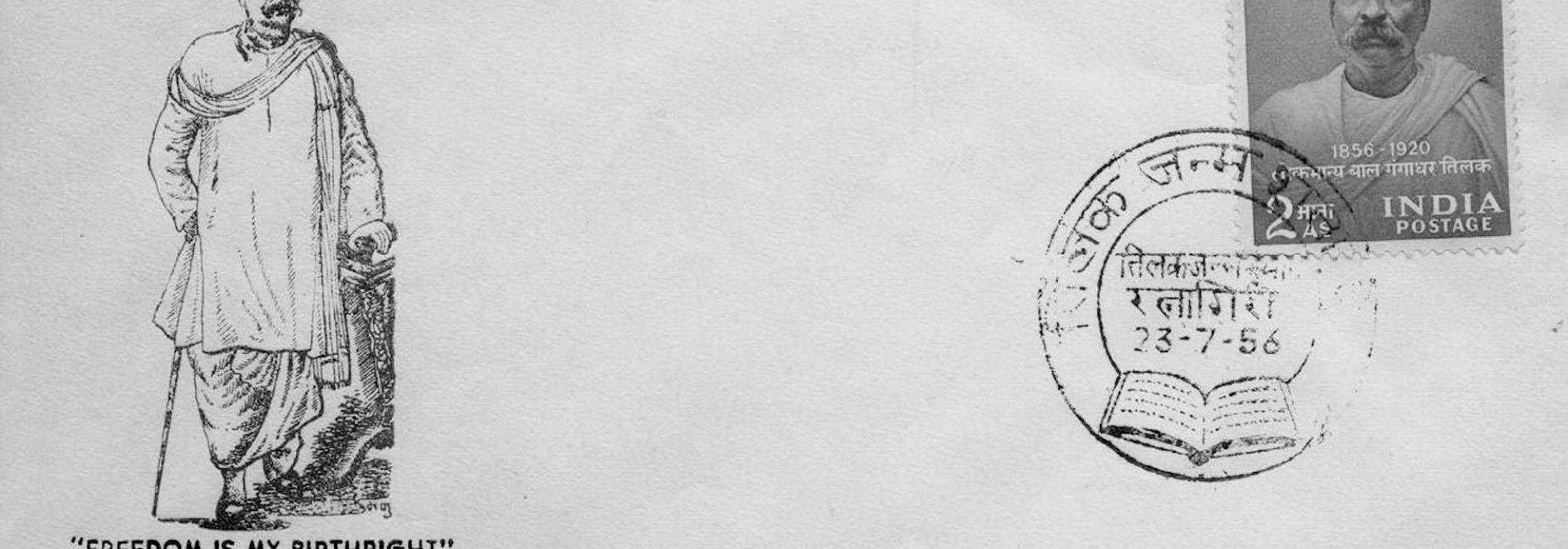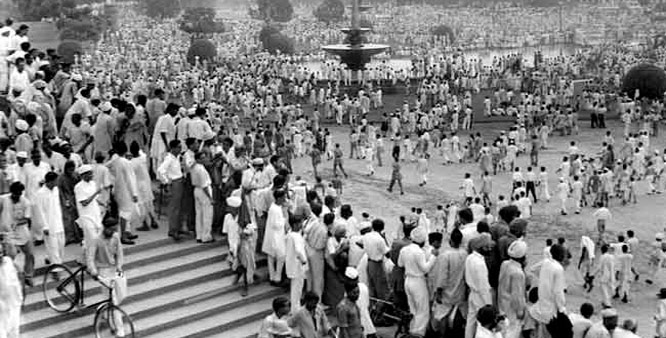Would somebody ask what’s the relationship between national freedom and poetic inspiration? Those who believe that freedom is related to our individual lives must equally believe that it is related to poetry (in the sense of literature) as well; this is because there is not an inch of space on the stage of human life which does not invite the poet. Everywhere our minds can go, the poet has an entrance there. The ups and downs of the life of our hearts is poetry. If the lives of people can obtain a newness from freedom, that same new energy can also provide a fresh inspiration to poetry.
Equally, if the poet is able to envision a new beauty in life as a result of the fruition of national freedom, that inner realization takes form in his poetry and becomes a fresh inspiration for the people. If the sunrays of freedom are the inspiration for the flowering of the lotus of our life, poetry provides the nourishing nutrients of the earth to it.
What is the kind of new life that we must aspire for, now that we have attained freedom? That India must become a second England? Become a shadow of Russia? A reflection of America? To be known as the greatest country that manufacture bombs? Or to show the virtuous cure that makes bombs redundant? If the full fruit of India’s freedom means the blind imitation of Western nations, not too many would be interested in it.
But if it isn’t so, if India should live as India—an India that becomes a much better India…if this is the ultimate benefit of freedom, then we would obtain an interest about our Swadharma. The world would have a fresh, auspicious expectation. So, what are the contours of this kind of India? What is the life-fulfilment of this new India? It is our new poets who need to provide answers to these questions.
Three inner strengths exist in a poet which are not that clearly visible in other people: the first is the subtle and secret stage of the life of the world. This is the inner experience. This is talent. The second is the raw material derived from this inner experience, which, through the application of the creative originality gives birth to a new story on the stage of his mind. This is imaginative inspiration. The third strength of the poet: the external presentation of this internal creation. It is the composition of literature. It is the fulfilment of language.
The spear that pokes and wakes up the inspiration slumbering within the cave of the poet’s heart is the world that surrounds him. When there’s a great experience outside, great inspiration stirs inside him. Thousands of years ago, someone squeezed a drop of sourness into the milk of one family that was the center of the national life of this country; sacrifice and valour simmered over; Valmiki’s throat choked with compassion. At another time, someone started a smoke with raw firewood in the stove of a family that was central to the nation. Dharma and heroism bulged up and stood upright; Vyasa’s eyes clouded with grave tenderness. Once, ethical doubts and moral frailties joggled the Italian society; Dante’s mind turned inward with worry. At another time, the people of England were regaled by great adventures and immense enthusiasm; Shakespeare’s vision became concentrated in the subtleties of human nature. Thus, if a question arises in the events of the world, the answer begins to journey from the poet’s inner life.
Can someone honestly claim that there’s no challenge in the life of the contemporary world? We are observing the troubles rife in the Western world as a result progress—the same Western world which was supposed as our Guru of progress. Both prosperity and an abundance of unhappiness have ensued from their progress in the natural sciences there. The excesses and haste of science have altered the price of material things which until then were fixed by old religions. Thanks to the glory of materialism, an outcome of the infusion of science, avarice and craving have established total authority over our lives. The principal and only goal of our lives has now become a quest for increasing the standard of material living. For suzerainty of land, metal, coal, oil, forest, industrial raw materials and customers, there has erupted between nations, races, and individual men, an unceasing competition, jealousy, war, the fear of war, and the preparation for war—these have occurred. There should be no place left on the earth that can act as a sanctuary of contentment and peace. The old beauty has vanished from life; there’s no sign of the arrival of new beauty. In such trying times, it’s our desire to see if some new revelation of beauty strikes the eyes of our poets.
If we were to say that the world can overcome this formidable fort of illusory distress through the illuminating rays of Dharma, it would appear that it’s nothing more than mere wishful thinking expressed in words.
What is Dharma? Shall we say the roots of its philosophy lie in our Vedas? The philosophy that lies only in books and doesn’t appear in practice and application is akin to a lifeless body in a glass coffin. If a philosophy or tenet needs to be recognized as living, it must be applicable to life and world situations. How does it matter if a tenet is supremely lofty but is impossible for practical application? How should we apply the tenets hailed by our Rishis to the problems and questions of today?
The foundations of our society have been irreparably displaced. The conduct, customs, and traditions handed down to us from ancient times have been erased. Old beliefs have faded. Is it even possible to literally adhere to the codes laid down by Manu and Parashara in the atmosphere present today? Is it possible for us to live away, separately, from today’s world? Is it even necessary? Is it appropriate to do so? Or is it possible to refashion that old world to suit contemporary impulses in a way that is concordant with individual freedom and social norms? This is the question.
It is unjust to claim that everything in the modern civilization is squalid. This civilization is but one phase in the inherent aspiration for progress in human nature. There’s no cause to fault it. The path of benefit lies in understanding it. The fault lies neither in the natural sciences nor in natural resources; it lies in the manner in which we use these. It is more suitable if we try to locate this fault in our purpose and methods. What is required for us now is an examination of our approach to ethics and a sort of new rule of ethics. But then, ethics is the infant of the heart and intellect. The work of literature is to beautify the heart of this marital couple and thereby rectify their intellect.
The world now awaits a Mahakavya (Epic Poetry) of this nature. What we today seek from literature is not mere entertainment but the revelation of the grand and the exalted. Of course, there exists literature of some substance in the literary annals of every nation in every age. What is rare is the literature of fulfilment. This must evoke the 19th Parva (Canto) of the Mahabharata; the joy of the 4th Canto of Dante’s Divine Comedy. It could be poetry, prose, drama, novel, history, contemplations; it could be in whatever style, whatever consistency—but the favour it must bestow upon us is life-renewal. It’s not enough if it’s emotionally charged; it needs to contain the vital essence of philosophical examination. The flood of the emotion of the heart must flow by consoling the questioning intellect.
The inspiration for germinating this sort of life-nurturing literature can’t be achieved without Tapas. Neither should only those endowed with literary ability perform this Tapas; all the educated people of the country, all the thinking people must perform this Tapas in their respective fields. The Rishis underwent Tapas for Rama’s avatara (incarnation). Dasharatha performed a Yajna. All the citizens of this country need to sanctify themselves for the birth of this new Mahakavya. The writer must himself wear the garment of Diksha, a sacred vow. India’s leaders and nationalists mustn’t merely content themselves with the current goings-on. They need to closely examine the country’s true nature, its various circumstances, its history, the impulses and ideals hidden in its soul, and re-earn the revelation of its Swadharma. If national freedom helps in this kind of examination of Dharma, the resultant fresh flowering of the mind and intellect might equally sow the seeds of inspiration for fresh literature.
Several nations in the world have remained independent for ages. When we observe the number of Mahakavyas that arose there, it becomes clear that the true fountainhead of literature is not freedom but the exercise of it. Literature arises from the sea of the people’s heart and from the churning of the poet. National freedom provides the opportunity and the stimulus for this Samudramanthana (churning of the ocean).
(This essay forms part of the Bidi Barahagalu collection of D V Gundappa’s magnum-opus Jnapakachitrashaale (Vol. 10) – ‘Kavya—2, Bidi Barahagalu.’ DVG originally delivered this as a radio lecture relayed on 15 August 1954 from the Mysore Akashavani. Translated from the original Kannada by Sandeep Balakrishna.)
















































Comments